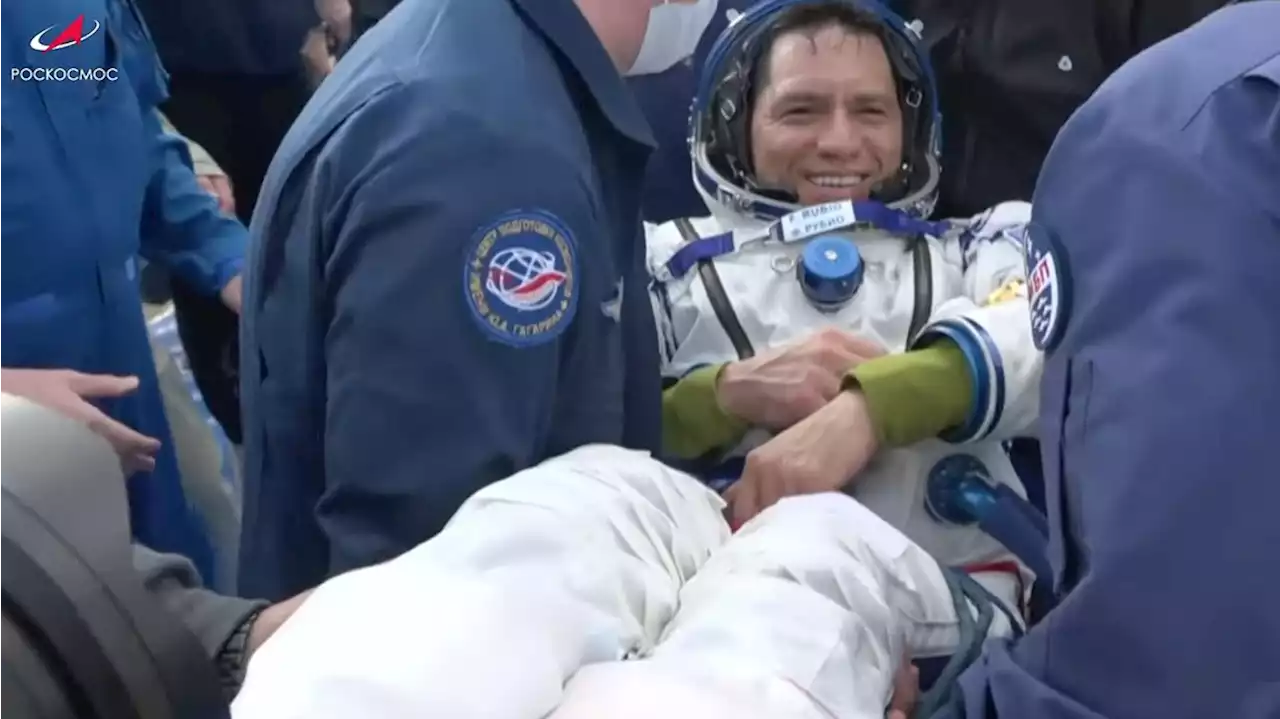What should have been a 180-day mission turned into a 371-day stay aboard the International Space Station.
after their original ride was hit by space junk and lost all its coolant while docked to the International Space Station.
The Soyuz capsule that brought Rubio and cosmonauts Sergey Prokopyev and Dmitri Petelin back was a replacement launched in February. Russian engineers suspect a piece of space junk pierced the radiator of their original capsule late last year, midway through what should have been a six-month mission. Engineers worried that without cooling, the capsule’s electronics and any occupants could overheat to dangerous levels, so the craft returned empty.
“No one deserves to go home to their families more than you,” the space station’s new commander, Denmark’s Andreas Mogensen, said earlier this week.NASA astronaut Frank Rubio, Russian cosmonauts Sergey Prokopyev and Dmitri Petelin sit in chairs after they landed on Sept. 27, 2023. Rubio had said the psychological aspect of spending so long in space was tougher than he expected. He may hold on to this record for a while. NASA has no plans as of now for more yearlong missions.
United States Latest News, United States Headlines
Similar News:You can also read news stories similar to this one that we have collected from other news sources.
 NASA astronaut Frank Rubio lands on Earth after being stuck in space for a yearWhat should have been a 180-day mission turned into a 371-day stay aboard the International Space Station.
NASA astronaut Frank Rubio lands on Earth after being stuck in space for a yearWhat should have been a 180-day mission turned into a 371-day stay aboard the International Space Station.
Read more »
 NASA astronaut Frank Rubio lands on Earth after being stuck in space for a yearWhat should have been a 180-day mission turned into a 371-day stay aboard the International Space Station.
NASA astronaut Frank Rubio lands on Earth after being stuck in space for a yearWhat should have been a 180-day mission turned into a 371-day stay aboard the International Space Station.
Read more »
 NASA's Frank Rubio returns to Earth after record-breaking year in spaceWhat should have been a 180-day mission turned into a 371-day stay aboard the International Space Station.
NASA's Frank Rubio returns to Earth after record-breaking year in spaceWhat should have been a 180-day mission turned into a 371-day stay aboard the International Space Station.
Read more »
 NASA's Frank Rubio returns to Earth after record-breaking year in spaceWhat should have been a 180-day mission turned into a 371-day stay aboard the International Space Station.
NASA's Frank Rubio returns to Earth after record-breaking year in spaceWhat should have been a 180-day mission turned into a 371-day stay aboard the International Space Station.
Read more »
